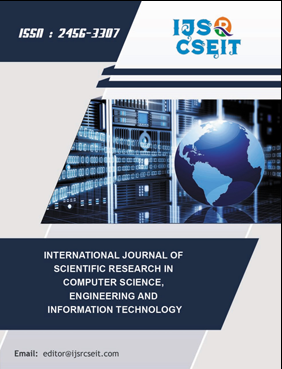Revolutionizing Customer Service : The Impact of Large Language Models on Chatbot Performance
DOI:
https://doi.org/10.32628/CSEIT241051057Keywords:
Large Language Models, Natural Language, Response Generation, Chatbots, AI-Driven Customer EngagementAbstract
This article examines the transformative impact of Large Language Models (LLMs) on customer service chatbots across various industries. Through a comprehensive analysis of case studies, the article explores the implementation strategies, performance metrics, and technological advantages of LLM-powered chatbots in sectors including e-commerce, telecommunications, financial services, healthcare, and travel. The article highlights the advanced capabilities of LLMs in natural language understanding, response generation, and continuous learning, demonstrating their potential to significantly enhance customer interactions and operational efficiency. The article also addresses key technical challenges in implementing LLM chatbots, such as data privacy, response accuracy, and scalability, offering potential solutions for each. Finally, it discusses future directions for LLM-powered chatbots, including multimodal capabilities, emotion recognition, and predictive customer service, providing insights into the evolving landscape of AI-driven customer engagement.
📊 Article Downloads
References
REFERENCES
T. B. Brown et al., "Language Models are Few-Shot Learners," in Advances in Neural Information Processing Systems, vol. 33, 2020, pp. 1877-1901. [Online]. Available: https://www.researchgate.net/publication/341724146_Language_Models_are_Few-Shot_Learners
J. Devlin, M. Chang, K. Lee, and K. Toutanova, "BERT: Pre-training of Deep Bidirectional Transformers for Language Understanding," in Proceedings of the 2019 Conference of the North American Chapter of the Association for Computational Linguistics: Human Language Technologies, 2019, pp. 4171-4186. [Online]. Available: https://aclanthology.org/N19-1423/
A. Vaswani et al., "Attention Is All You Need," in Advances in Neural Information Processing Systems, vol. 30, 2017, pp. 5998-6008. [Online]. Available: https://proceedings.neurips.cc/paper_files/paper/2017/file/3f5ee243547dee91fbd053c1c4a845aa-Paper.pdf
J. Wei et al., "Chain-of-Thought Prompting Elicits Reasoning in Large Language Models," in Advances in Neural Information Processing Systems, vol. 35, 2022, pp. 24824-24837. [Online]. Available: https://www.researchgate.net/publication/358232899_Chain_of_Thought_Prompting_Elicits_Reasoning_in_Large_Language_Models
P. Thoppilan et al., "LaMDA: Language Models for Dialog Applications," arXiv preprint arXiv:2201.08239, 2022. [Online]. Available: https://www.researchgate.net/publication/357987409_LaMDA_Language_Models_for_Dialog_Applications
S. Roller et al., "Recipes for Building an Open-Domain Chatbot," in Proceedings of the 16th Conference of the European Chapter of the Association for Computational Linguistics: Main Volume, 2021, pp. 300-325. [Online]. Available: https://parl.ai/projects/recipes/#:~:text=Recipes%20for%20building%20an%20open-domain%20chatbot%201%20Abstract,...%208%20Crowdworker%20conversation%20logs%20...%20More%20items
N. Houlsby, A. Giurgiu*, S. Jastrzębski*, B. Morrone, Q. de Laroussilhe, A. Gesmundo, M. Attariyan, S. Gelly, "Parameter-Efficient Transfer Learning for NLP," in Proceedings of the 38th International Conference on Machine Learning, 2021, pp. 8689-8704. [Online]. Available: https://icml.cc/media/icml-2019/Slides/4884.pdf
T. Wolf et al., "Transformers: State-of-the-Art Natural Language Processing," in Proceedings of the 2020 Conference on Empirical Methods in Natural Language Processing: System Demonstrations, 2020, pp. 38-45. [Online]. Available: https://aclanthology.org/2020.emnlp-demos.6/
Tony Z. Zhao, Eric Wallace, Shi Feng, Dan Klein, Sameer Singh., "Calibrate Before Use: Improving Few-Shot Performance of Language Models," in Proceedings of the 38th International Conference on Machine Learning, 2021, pp. 3571-3581. [Online]. Available: https://arxiv.org/abs/2102.09690
L. Melis, C. Song, E. De Cristofaro, and V. Shmatikov, "Exploiting Unintended Feature Leakage in Collaborative Learning," in 2019 IEEE Symposium on Security and Privacy (SP), 2019, pp. 691-706. [Online]. Available: https://ieeexplore.ieee.org/document/8835269 DOI: https://doi.org/10.1109/SP.2019.00029
W. Xu et al., "Beyond Goldfish Memory: Long-Term Open-Domain Conversation," arXiv preprint arXiv:2107.07567, 2021. [Online]. Available: https://arxiv.org/abs/2107.07567
B. Jacob et al., "Quantization and Training of Neural Networks for Efficient Integer-Arithmetic-Only Inference," in 2018 IEEE/CVF Conference on Computer Vision and Pattern Recognition, 2018, pp. 2704-2713. [Online]. Available: https://arxiv.org/abs/1712.05877 DOI: https://doi.org/10.1109/CVPR.2018.00286
A. Radford et al., "Learning Transferable Visual Models From Natural Language Supervision," in Proceedings of the 38th International Conference on Machine Learning, 2021, pp. 8748-8763. [Online]. Available: http://proceedings.mlr.press/v139/radford21a.html
R. Zhang, Z. Chen, Z. Yang, D. Zhao, and M. Hu, "Emotion-Cause Pair Extraction as Sequence Labeling Based on a Novel Tagging Scheme," in Proceedings of the 2021 Conference on Empirical Methods in Natural Language Processing, 2021, pp. 1671-1681. [Online]. Available: https://aclanthology.org/2020.emnlp-main.289
Downloads
Published
Issue
Section
License
Copyright (c) 2024 International Journal of Scientific Research in Computer Science, Engineering and Information Technology

This work is licensed under a Creative Commons Attribution 4.0 International License.




